The Roman cities of Pompeii and Herculaneum, which were buried by the eruption of Mount Vesuvius in 79 A.D., contained a significant amount of erotic art. Fortunately, due to the layer of volcanic ash and mud that covered the cities and preserved them until their rediscovery in the 18th century, this art was shielded from desecration by later vandals and the puritanical ideologies of subsequent religions.
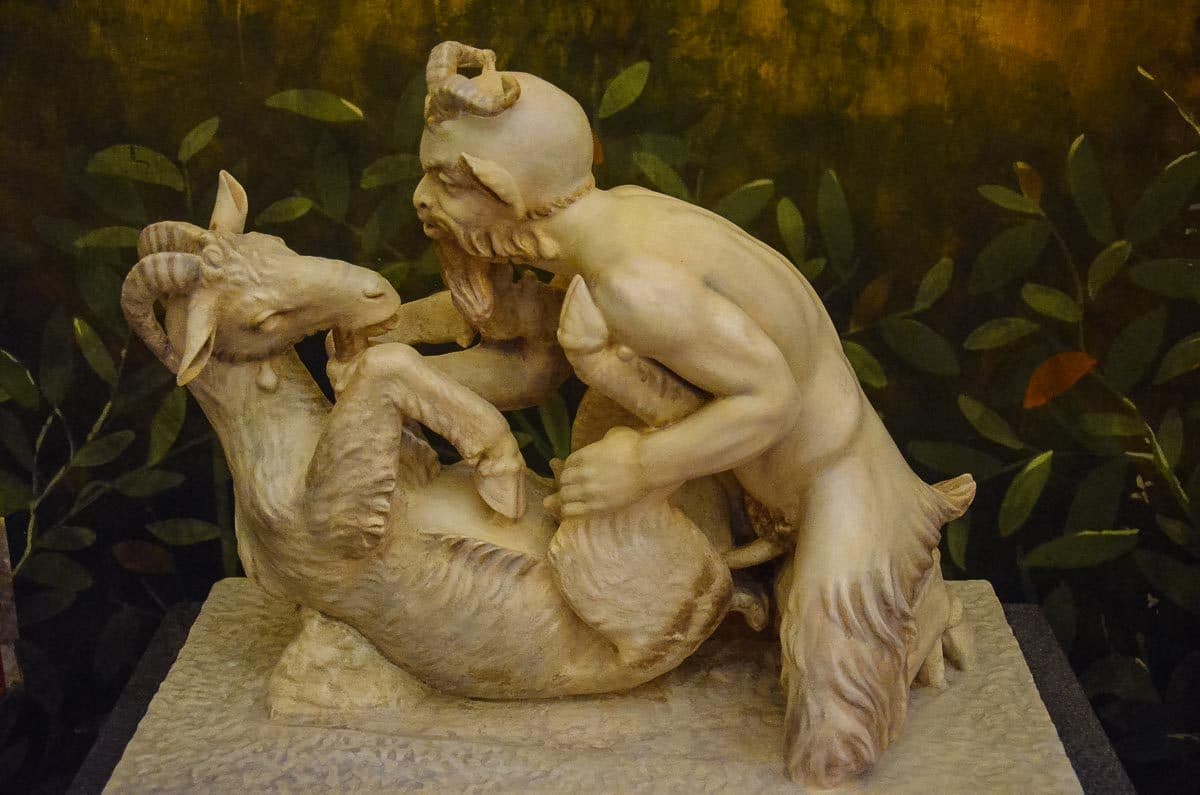
Ancient Romans certainly had a more open attitude toward sex, as is evidenced by the fact that these erotic works of art are found not only in brothels and public baths in Pompeii and Herculaneum, but also in private homes. Indeed, prosperous scions of the ancient Roman world were predisposed to decorating their homes with frescoes which depicted everyday life and the rooms’ purpose, e.g. dining rooms had wall paintings of food, salons had pictures of people having conversations (often with the aid of the wine of Bacchus,) and bedrooms often had both erotic and fertility decoration.
I suppose I should warn you now, in case you haven’t figured it out from the title of this post, that these images are probably not for everyone. While they’re very tame when compared to 20th Century erotic photography, the art of a Pompeii brothel nevertheless can be a bit shocking. So, if you aren’t interested in the historical sexuality of the Romans and a fuller understanding of Roman culture, please click away to another post about visiting Pompeii, Herculaneum, and Oplontis, where I’ve left these images out. OK?
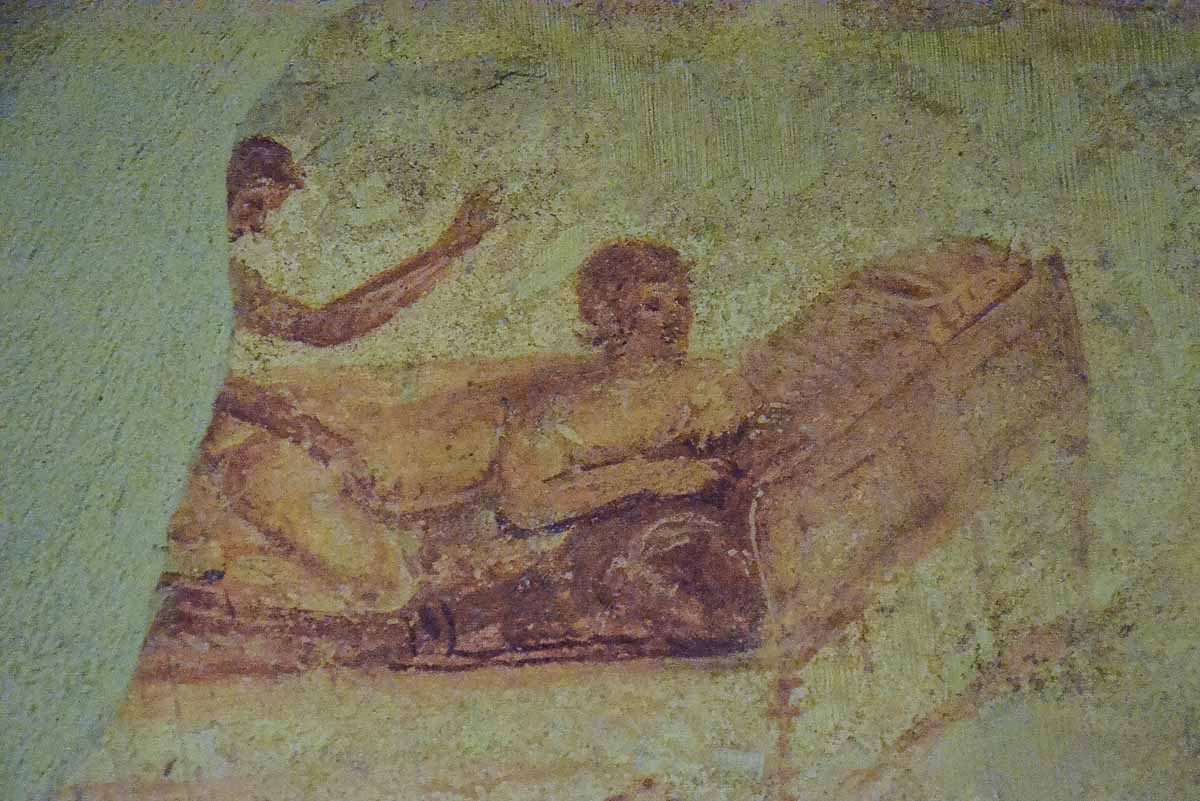
When we visited Pompeii, without doubt the most popular of the buildings for visitors was the lupanar, or brothel. Lupanar in Latin literally means “wolf’s den,” and lupa, she-wolf. was the common term for a prostitute. Not surprisingly, the walls of the small dank rooms of the lupanar were decorated with with both the male and female body in various states of coupling. Warning: the rooms are rather dark. You’ll need a good camera and be adept at holding it still for a long exposure if you want to shoot the paintings.
Here are two more examples from the lupanar. Usually the erotic paintings of the sex workers were displayed above the stone beds where they plied their trade. (Presumably the beds had cushions. Otherwise, ouch.)
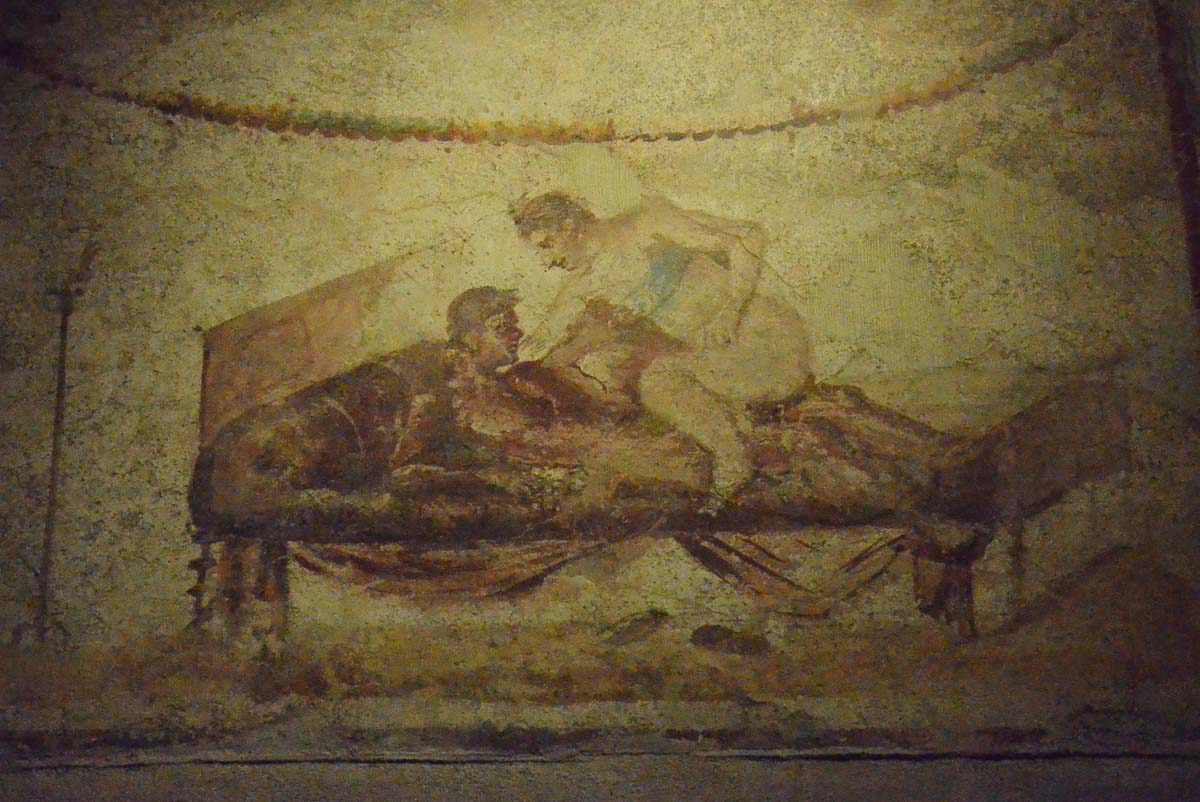
When you consider this sort of erotic art in of Pompeii and Herculaneum, it should also be kept in mind that these two ancient cities and others around them were often summer residences of the Roman elite. In addition to catching some cool sea breezes in the hot Italian summer, the visitors could also get a respite from the official prudery of Augustan Rome. Since the late First Century B.C., adultery was a public and private crime in Rome and could be punished by exile. Consequently, it’s believed that amorous Romans probably preferred to practice their dalliances further away from the eyes of the emperor.
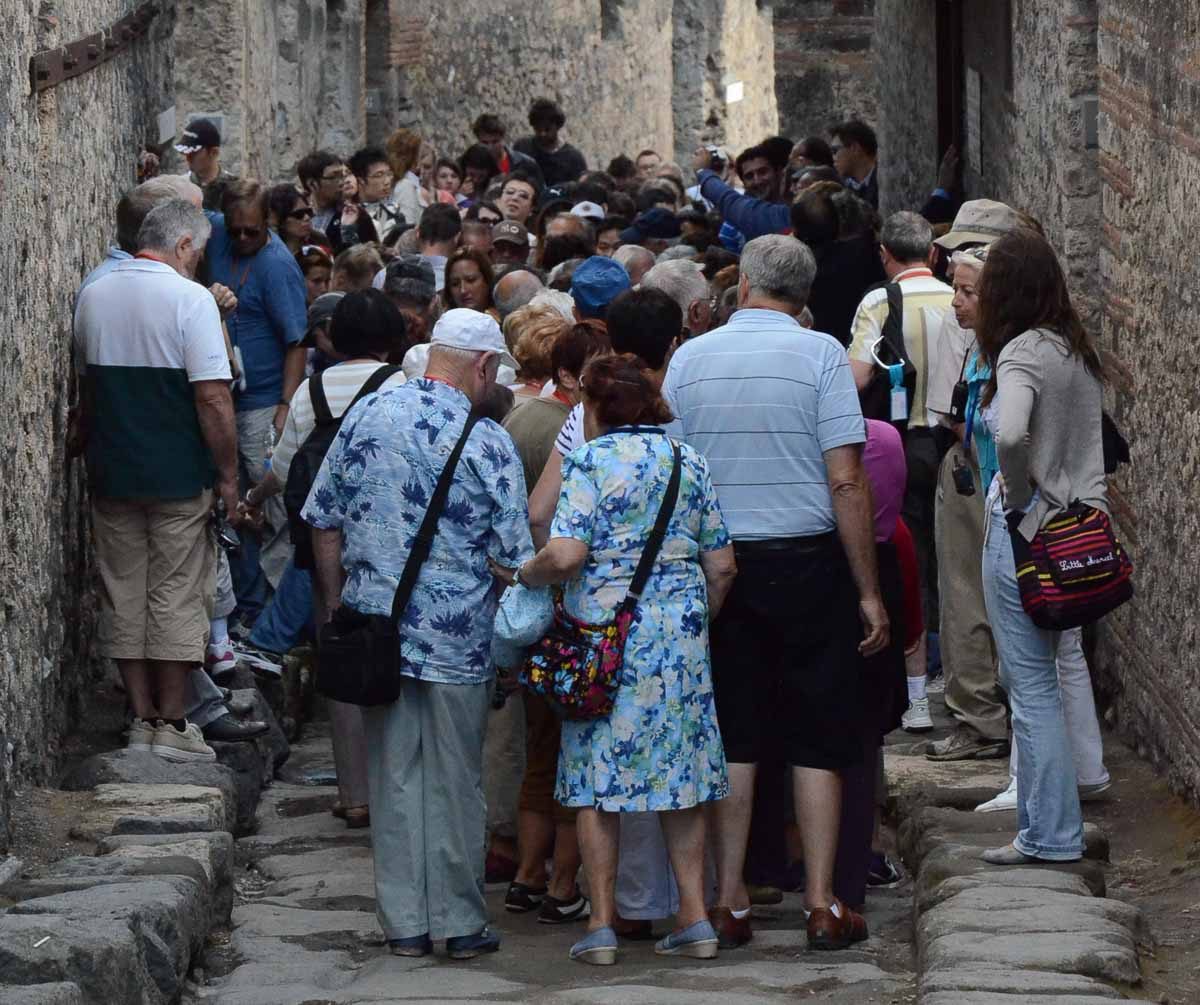
If you want to see the lupanar–and who doesn’t?–chances are good you’ll be standing in a crowd like this one before pushing your way in. Believe me, it’s not pretty.
Another repository of the erotic fine art of Pompeii was the public bath outside the city walls, the so called Suburban Baths. The bath was entered by a long hall which led to a dressing room were the walls were covered with the erotic art. Roman baths were not generally used as a brothels, so it’s a little unusual to see this sort of erotica in this location. Each scene is located above a numbered box, and some scholars speculate the art may have been a means of remembering which locker was yours. It’s fair to also speculate that art like this in a public bath means that overt displays of sex acts were not regarded as offensive by the Romans.
Each illustration is of a different sex act, presumably to differentiate the lockers from each other. There is no evidence for the oft-reported assertion that the sex acts depicted in these paintings represented the “services offered” by the prostitutes.
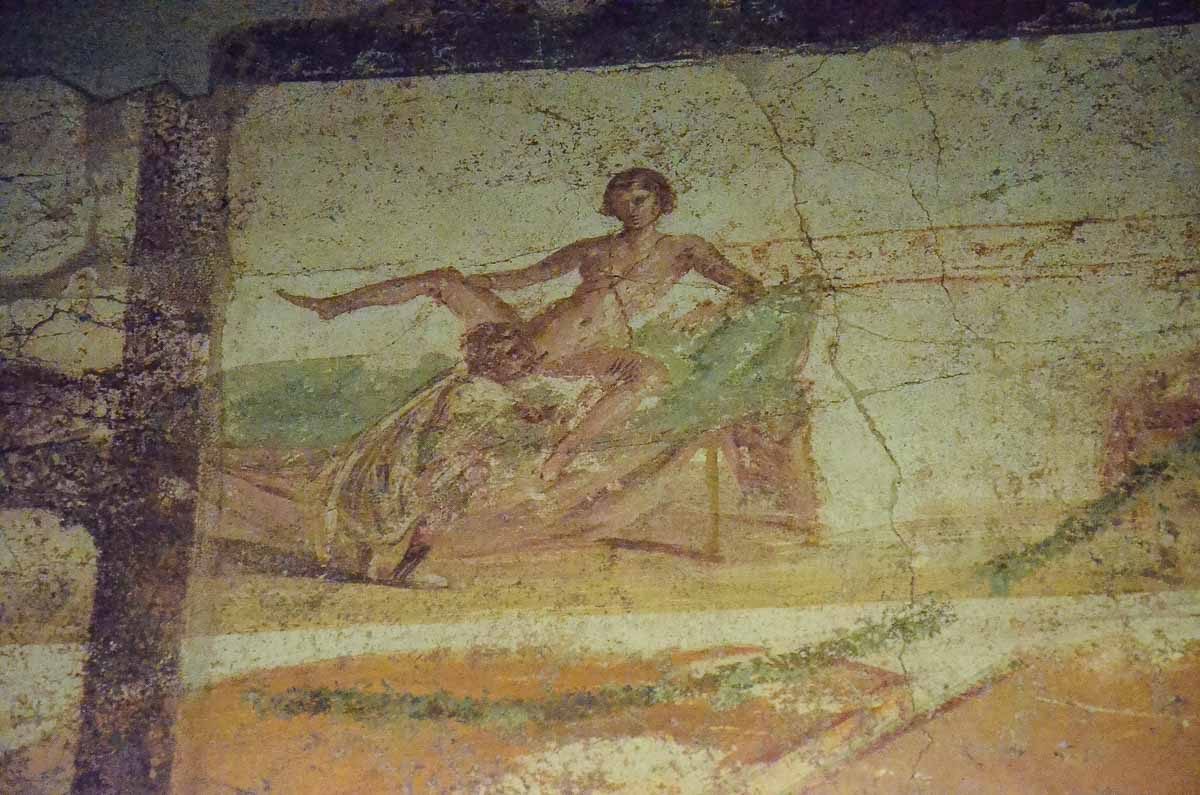
One question: if a Roman were using these facilities during the time of the eruption of Vesuvius, do you suppose he asked, “The earth moved for me. How about you?”
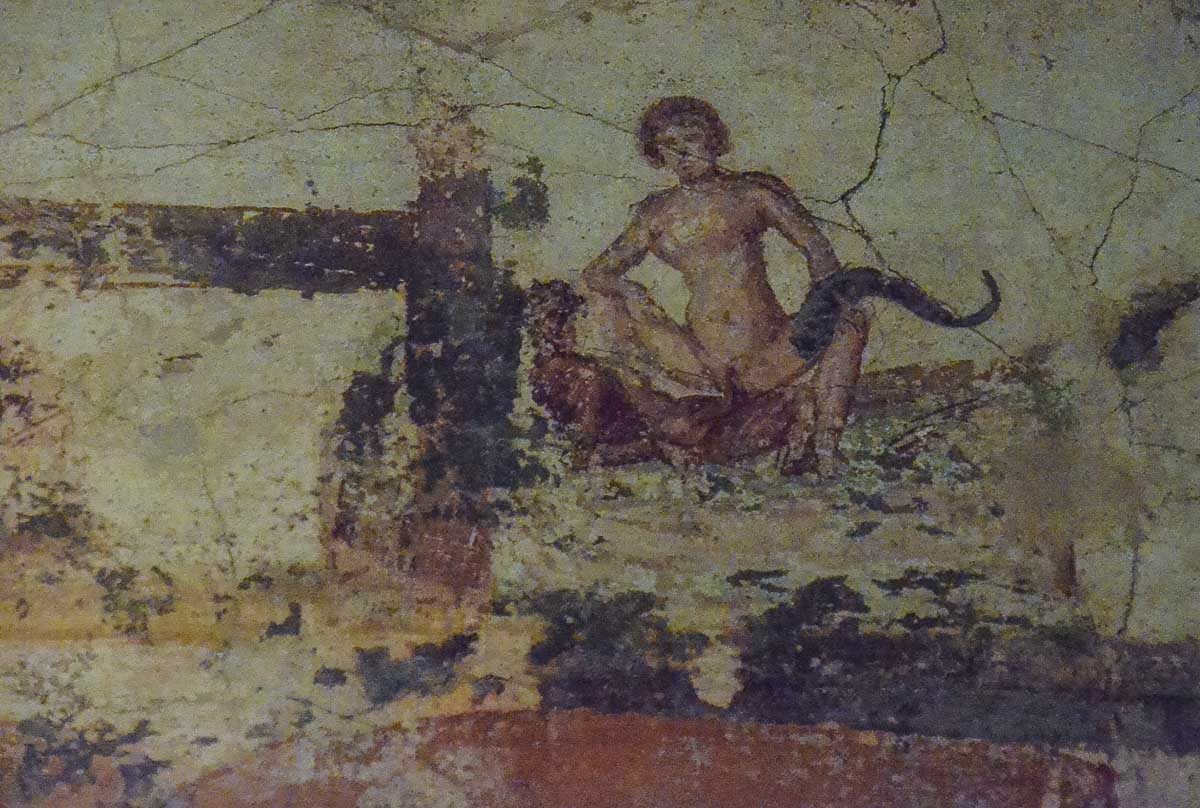
Herculaneum, Pompeii’s neighbor, was also buried by Vesuvius in the same eruption, but was victim to a different facet of volcanic violence. While Pompeii was buried by ash and pumice raining down from the sky, Herculaneum was flash fried by multiple pyroclastic flows which buried the city is what was, in effect, a hot ash mud slide.
The best preserved of Herculaneum’s fine art and artifacts have mostly made their way into the National Archeological Museum in Naples. There you can see not only magnificent mosaics and frescoes and other early examples of western art history lifted from the two cities, but a rather randy collection of erotic objects. If you are really interested in an in-depth look, take Context Travel’s tour of the Naples Archeological Museum.
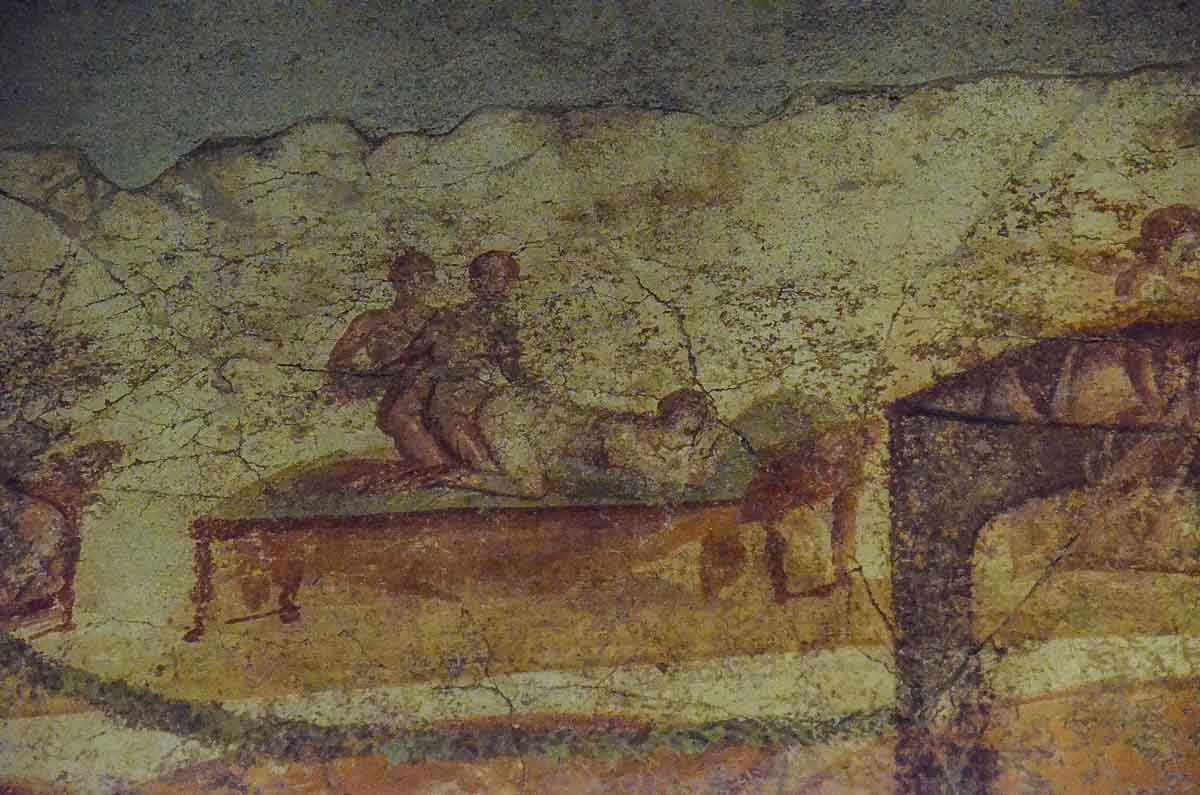
The erotic art of Pompeii and Herculaneum is housed in a special room at the Museum called the Gabinetto Secreto, or Secret Cabinet. It’s sort of fruitless to try to give information about the opening times of either the main museum or the Secret Cabinet, because, well, it’s Italy. We had to go back to Naples from Pompeii more than once to see the museum because many rooms were closed due to budget and staff shortages. Of course that was a few years ago, but I’ve since read that things weren’t much better now. My advice is call ahead, because the web site isn’t accurate either. (Your hotel should be able to do that for you if you don’t speak Italian.)
All that said, here are a couple examples of the Secret Cabinet’s collection. Keep in mind that despite the irregular hours, we’re lucky that it is open at all. For a long time, due to “public morality” concerns, it wasn’t. Or it was only open by appointment. Or, it was only open if you knew someone. It has been open to the general public only since 2000. And those under 18 must be accompanied by an adult.
The ruins of Pompeii and Herculaneum are part of the UNESCO World Heritage site of Archaeological Areas of Pompei, Herculaneum and Torre Annunziata. For a complete list of the UNESCO World Heritage sites in Italy and the ones we’ve visited, click the link.
We’ve also written about ancient erotic art in India at the Temples at Khajuraho.
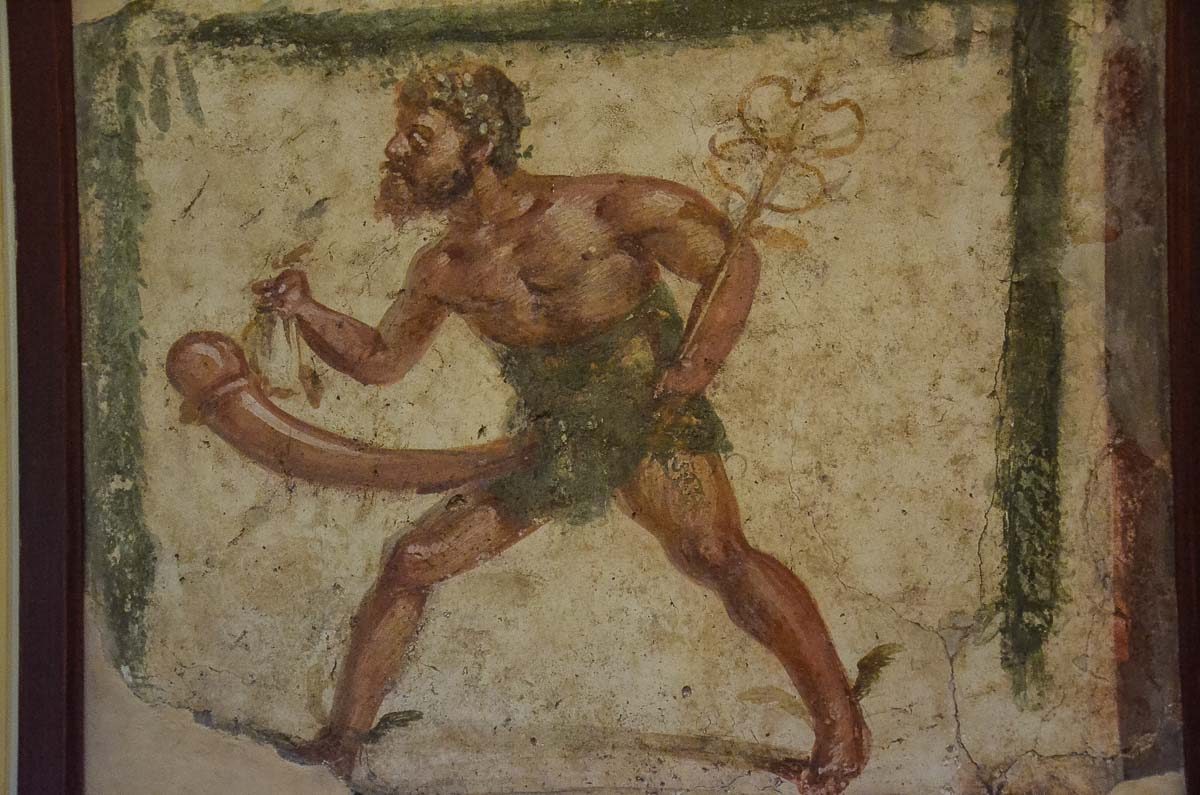
Where to stay in Pompeii
If you go to Pompeii, btw, we highly recommend the Hotel Diana. A very nice family owned hotel in the middle of the town. A short walk to the entrance of the ruins, and they’ll help you with a guide, and entrance to the Suburban Baths, which require an advance ticket. Or, you can click here for more Pompei hotels.. If you book a hotel using these links, Travel Past 50 will receive a small commission at no additional cost to you.
If you visit Rome
Check our our post on other archeological sites in Rome, including the spectacular Colonna Palace, and at Hadrian’s Villa in Tivoli.
Tours of Pompeii
Below are some links to tours of Pompeii and Herculaneum. If you’re not as versed in Roman history and culture as you’d like to be, we highly recommend a guide. If you book a tour using one of these links, Travel Past 50 will receive a small commission at no additional cost to you.





